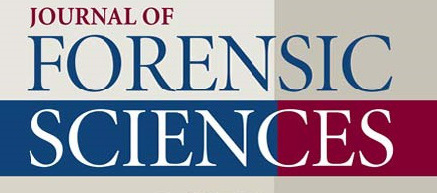Sub‐visible Paint Article by Microtrace Scientists
The Journal of Forensic Sciences recently published an article by several Microtrace scientists. The article entitled “Locating, Identifying, and Comparing Sub‐visible Paint Particles” was co-authored by Christopher Palenik, Ethan Groves, Joseph Insana, and Skip Palenik.
The authors suggest an application of stereomicroscopy, polarized light microscopy, infrared microspectroscopy, Raman microspectroscopy, and SEM/EDS that can provide useful information to forensic investigations from paint samples that are invisible to the unaided eye. Using a case study, they also explore the value and potential of this approach to forensic paint comparison.
Please read the entire article here.
The preparation of this paper was partially supported by an NIJ grant, and relied upon research developed in previous NIJ grants.
Abstract
Forensic paint comparisons are generally conducted on samples which, while small relative to their source, are still visible to the unaided eye and are thus located and analyzed without great difficulty. Here we demonstrate that a more detailed examination of candidate transfer surfaces can capture materials (questioned samples), even when such traces are invisible to the unaided eye. While certain analytical details (such as layer sequence or a pure FTIR spectrum) may not be obtainable from such traces due to their size and condition, a detailed analysis of the sample characteristics that are analytically accessible may still provide sufficient analytical data to arrive at a probative result. Here we present the application of this approach to a suspected paint transfer case, involving particles of paint as small as 40 μm in size. Using a combination of stereomicroscopy, polarized light microscopy, infrared microspectroscopy, Raman microspectroscopy, and SEM/EDS, all performed on a single, subsample of the original minute particle, it was possible to demonstrate evidence of a two‐way transfer between the suspected sources. Furthermore, the transferred paint particle in one direction could be classified as automotive in nature based on a combination of polymer composition, microscopic texture, and pigment package (which included three specifically identified pigments). This work demonstrates (i) the potential for improving detection limits when searching for a questioned sample, (ii) the potential benefits of higher resolution analyses on samples that would be traditionally labeled as “sample‐size limited,” and (iii) the value of case‐specific interpretation over standardized, one‐size fits all report templates.
American Academy of Forensic Sciences
The American Academy of Forensic Sciences is a multi-disciplinary professional organization that provides leadership to advance science and its application to the legal system. The objectives of the Academy are to promote professionalism, integrity, competency, education, foster research, improve practice, and encourage collaboration in the forensic sciences.
How May We Help You?
Contact usto discuss your project in more detail.








